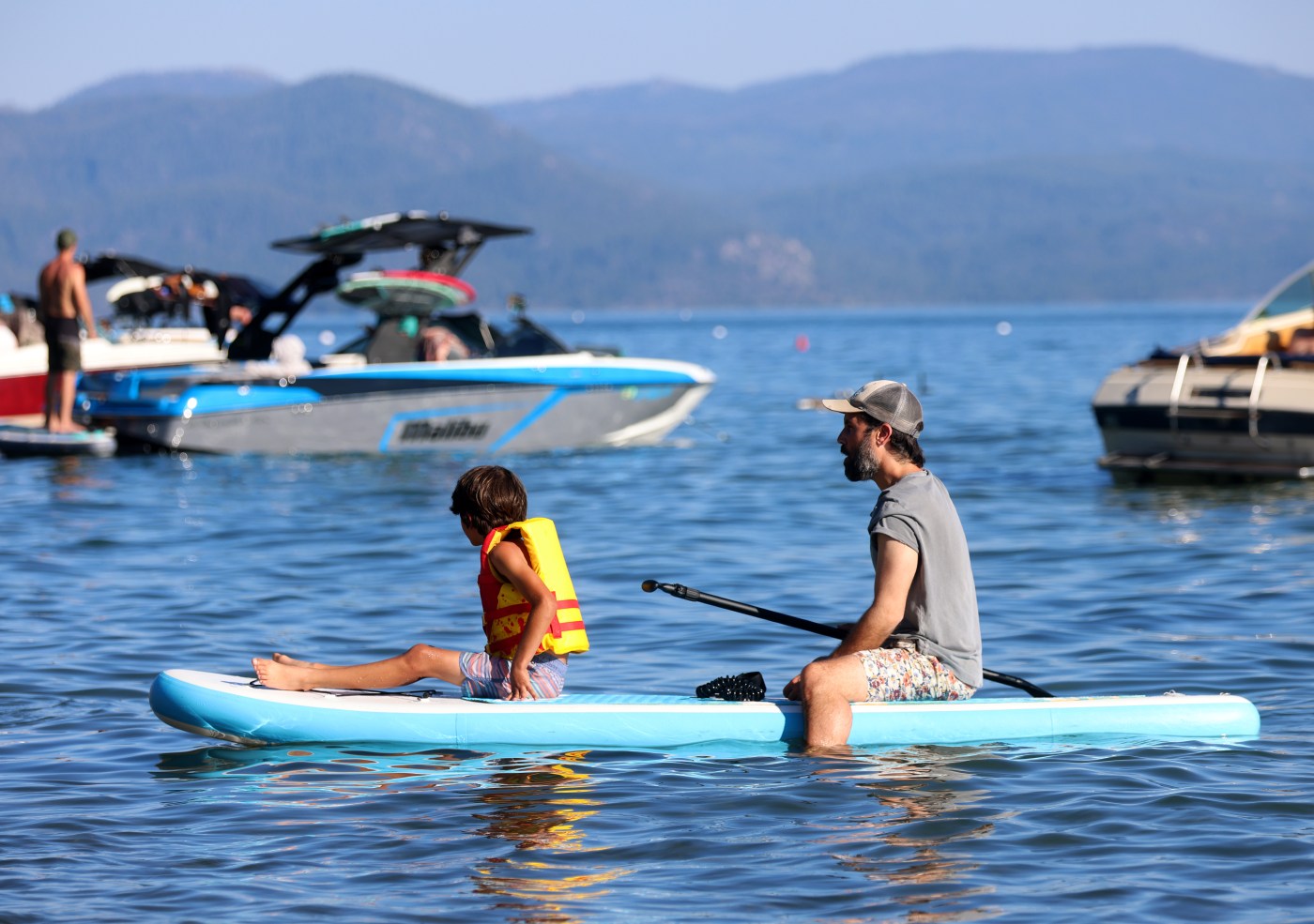
For most Californians, living in an area with such magnificent nature and climate is truly a privilege, yet it’s easy to forget that this environment can also be dangerous and even life-threatening.
On Wednesday, a federal investigation revealed that none of the eight people who died in last month’s Lake Tahoe boat capsizing was wearing life vests.
The preliminary report by the National Transportation Safety Board highlighted a dramatic and dangerous shift in weather conditions that caused the tragedy.
Related Articles
Lake Tahoe boating accident report: None of 8 killed wore life vests, investigation reveals
Roadside parking ban is latest restriction for Lake Tahoe tourists
Lake Tahoe boating tragedy: Victims completed safety course, but half of California boaters have not
Joe Montana endorses 49ers paying Purdy: ‘It’s not like he hasn’t done the job’
Kyle Juszczyk hasn’t forgotten ‘three worst days of my life’ amid 49ers free agency
According to investigators, there were 10 people aboard the vessel when it overturned. Only one person was wearing a life jacket, while a second survivor managed to stay afloat by clinging to a life vest in the water.
The findings underscore the critical importance of wearing proper safety gear, especially on a body of water like Lake Tahoe, where weather can shift rapidly and dangerously.
Here is a safety checklist for visitors who want to enjoy Lake Tahoe safely, according to the Lake Tahoe official guide, the U.S. Coast Guard, and the California State Parks Boating and Waterways (DBW).
1. Get your California Boater Card: As of Jan. 1, 2025, all operators of motorized vessels in California, regardless of age, are required to carry a California Boater Card. The card certifies that the holder has completed a state- and NASBLA-approved boating safety course and passed the corresponding exam. However, according to California State Parks, only about 45% of California boaters carry a card.
The requirement now applies to boaters of all ages operating motorized vessels on state waterways, aiming to improve safety and reduce accidents on the water.
2. Always check the weather before getting on the water: Nestled in the Sierra Nevada, Lake Tahoe’s weather is highly fluctuating, attracting visitors year-round for both skiing and lakeside relaxation. However, sudden shifts in weather, especially gusty winds, can create hazardous boating conditions. Boaters are urged to check conditions before heading out. Up-to-date forecasts are available through the National Weather Service website.
3. Always wear a life jacket: Public safety experts recommend wearing a properly fitted Personal Flotation Device (PFD) at all times. Wearing a life jacket is crucial. According to officials from the California State Parks, 85% of people who drown in fatal boating accidents aren’t wearing one. Even strong swimmers can struggle in cold, open water, where sudden immersion can shock the body and make it difficult to stay afloat.
4. Check your vessel: Before heading out, avoid overloading your boat. Follow the manufacturer’s weight and capacity limits for passengers and gear. Check fuel levels to ensure you have enough for your trip, including a reserve. Inspect the engine compartment for gasoline fumes before starting the engine, as lingering vapors can pose serious fire or explosion risks.
5. Check your safety equipment: Before heading out on the water, ensure your vessel is equipped with all federally required safety equipment. Essential items include U.S. Coast Guard-approved life jackets, a fire extinguisher, a whistle or horn, a bell for larger boats, and visual distress signals such as flares.
Vessels with inboard gasoline engines also must have a proper ventilation system and a backfire flame arrestor to reduce the risk of explosion. Regularly checking and maintaining this equipment is critical for safety and compliance with federal boating regulations.
6. Instruct your passengers on basic safety procedures: Safe boating begins before leaving shore. Take time to instruct your passengers on basic safety procedures, including how to wear life jackets, use emergency equipment, and respond in case of an accident.
7. Always file a float plan: Let someone on shore know your trip details, including the operator’s name, passenger list, vessel description, registration number, and onboard communication equipment. A float plan is a detailed document with all specifics of the boat trip as a safety tool for rescuers to quickly locate the boat when emergency occurs, similar to a flight plan.
It is vital for all types of vessels, from a 10-foot kayak to a 90-foot yacht. While the boat operator typically prepares the plan, everyone onboard should understand the importance of informing someone on land about your route and expected return. This simple precaution can significantly aid rescue efforts in case of emergency. Download your float plan file here.
8. Protect the lake: Protect Lake Tahoe’s waters and wildlife by following boating rules. All vessels must pass an Aquatic Invasive Species inspection or show a valid seal before launch. Respect the 600-foot no-wake zone and 5 mph limit in sensitive areas like Emerald Bay. Watch for wildlife, stay clear of swimmers and paddlers, and help preserve this unique alpine ecosystem.